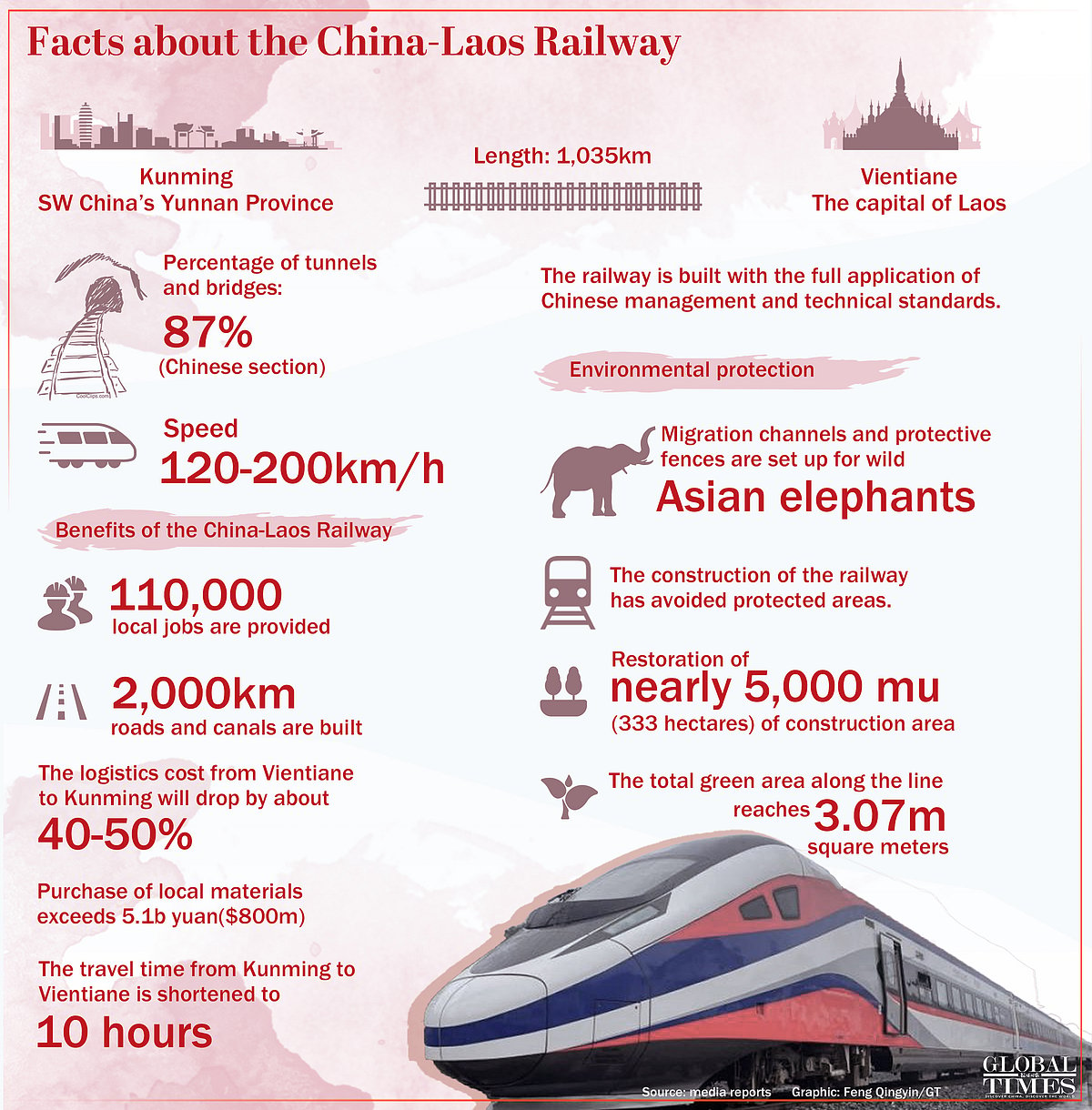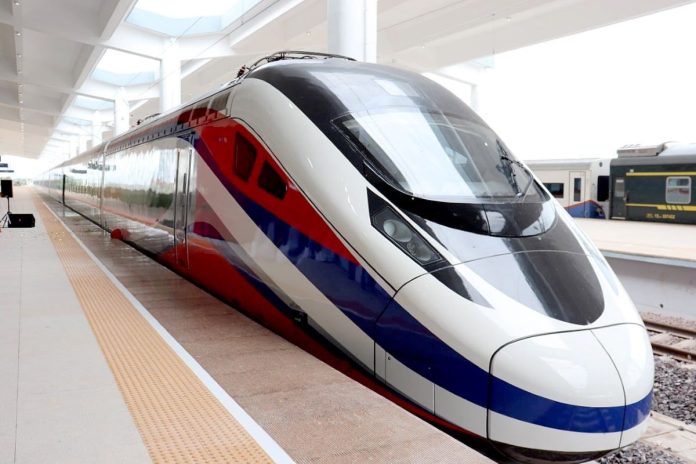Snapshot
The 1,035-kilometer-long China-Laos Railway, a flagship project under the China-proposed Belt and Road Initiative, was officially opened today (Dec 3) by Chinese President Xi Jinping and Lao President Thongloun Sisoulivia via a video link.
Build at an estimated cost of $5.9 billion, the rail project was financed through a combination of debt and equity (60:40 debt-to-equity ratio with $3.54 billion of debt and $2.36 billion of equity).
China-Laos Railway is envisaged as a part of a larger Kunming-Singapore Railway Project (also known as the Kunming-Singapore Trans Asian Railway Corridor), which starts from Kunming and ends in Singapore, passing through Laos, Thailand and Malaysia.
The 1,035-kilometer-long China-Laos Railway, a flagship project under the ambitious Belt and Road Initiative, was officially opened today (Dec 3) by Chinese President Xi Jinping and Lao President Thongloun Sisoulivia via a video link.
The new high-speed railway connects Kunming in Yunnan (China’s most south-western province) with Vientiane, Laos’s capital. The commissioning of the rail link is set to provide huge boost to the transport infrastructure of Laos, a landlocked Southeast Asian nation. Laos had no significant rail network till today except for a 3.5-kilometer run-down railway connecting capital Vientiane and country’s border with Thailand.
Laos-China Railway will reduce the time taken to travel from Mohan-Boten to Vientiane from three days to less than three hours.
In December 2016, Lao-China Railway Company — a joint venture between three Chinese state-owned enterprises that collectively hold a 70% ownership stake and one Lao state-owned enterprise that owns a 30% ownership stake — signed a BOT concession agreement with the Government of Laos for the China-Laos Railway Project.
Build at an estimated cost of $5.9 billion, the rail project was financed through a combination of debt and equity (60:40 debt-to-equity ratio with $3.54 billion of debt and $2.36 billion of equity).
Lao-China Railway Company directly secured $3.54 billion of debt financing from China Eximbank while the government of Laos and the Chinese Government jointly contributed $730 million and $1.63 billion of equity financing. Interestingly to make its own share of $730 million equity contribution to the rail project, the Government of Laos secured a $480 million loan from China Eximbank.
Constructed as a single-track electrified rail line with a designed speed of 160 km/hour, the railway project involved construction of 75 tunnels . over 167 bridges and 32 stations.
The 1,035-kilometer-long China-Laos Railway project comprises of two main sections – a 507-kilometer section connecting Yuxi and Mohan, a border town in Yunnan province of China and another section of 422-kilometer new section from Mohan to Laos’s capital Vientiane.
The Yuxi-Mohan section was built by China Railway Kunming Group, while the Mohan-Vientiane section, largely within Laos, was built by a China-Laos joint venture.

Kunming-Singapore Railway Project
China-Laos Railway is envisaged as a part of a larger 6,617.5km-long, Kunming-Singapore Railway Project (also known as the Kunming-Singapore Trans Asian Railway Corridor), which starts from Kunming and ends in Singapore, passing through Laos, Thailand and Malaysia.
Set to be developed with an estimated investment of $15bn, under the ASEAN-Mekong Basin Development Cooperation (AMBDC) which was formed to encourage economic integration among the Association of South-East Asian Nations (ASEAN) countries, Beijing envisions that the project is to give southern China more access to ports and export markets. Laos government hopes that the railway will energize their isolated economy by linking it to China and markets as far away as Europe.
The project is expected to realise its full potential if the network gets extended to Thailand and finally to Singapore. Thailand government has moved slowly on the project as it fears the cost implication.
According to a report in China’s national broadcaster CCTV reported earlier this year, the first 251-kilometer leg connecting the Thai capital, Bangkok, and Nakhon Ratchasima, better known as Korat, in northeastern Thailand, is expected to be completed and open to traffic in 2026.


